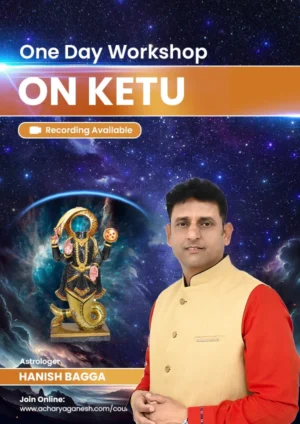Guru Purnima 2025:
Guru Purnima occurs on the full moon day of the Hindu month Ashadha. It is considered a day of worship for the Guru, or mentor. Generally speaking, a guru is someone who uses knowledge to enlighten us and help us emerge from the dark. Spiritual experts assert that the Guru is the one who liberates a follower from the cycle of life and death and aids in the realization of the eternal nature of the “aatma,” or consciousness. Across the country, people commemorate this event with great emotion and faith. Guru Purnima, which is also known as Guru Poornima, is a day to honor the role that a “Guru” or teacher has played in a person’s life.
Dates and times of Guru Purnima in 2025
In India, Nepal, and Bhutan, Hindus, Jains, and Buddhists celebrate Guru Purnima, which falls on the day of the Full Moon in the Hindu lunar month of Ashadha. Not many people observe it as a public holiday, despite its significance. The full moon in the Gregorian month of July 2025 falls on the Hindu lunar month of Ashadha. It is anticipated that Thursday, July 10, 2025, will be Guru Purnima. The auspicious lunar hour is from 1:36 AM on July 10 to 2:06 AM on July 11.
Importance of Guru Purnima in the year 2025
Thus, the festival of Guru Purnima has much more significance than being a merely religious or spiritual occasion. It now stands for a cross-cultural function of all religions and classes of society. On this day, people gather from various parts of the globe to pay respect to their teachers, and it is indeed a beautiful and pure show of gratitude. It is a powerful source of references to the ways that can change our lives and it is provided by educators, in each of their manifestations. The celebration of Guru Purnima is to realize and acknowledge the part of the educator in building not only the personality of the individual but also the society. Guru Purnima promotes the notion that we all should pay respect to those who feed our minds and our hearts, be it by visiting temples, receiving blessings or simply by thanking. This festival makes people understand how significant Guru Purnima is to remember that we have our masters, teachers , and guides—those who voluntarily assist in shaping up our lives and directions by teaching it. Every religion honors the spiritual mentors who opened the door for their existence. These three explanations of Guru Purnima are typical.
Hinduism:
Celebrated on the birth anniversary of Veda Vyasa, the author of the Hindu epic Mahabharata, is the Hindu festival of Guru Purnima, also called Vyasa Purnima. Respected for gathering the Vedic hymns of his era, Veda Vyasa created the groundwork for the several Puranas that are recognised today. Based on their qualities and application in Hindu ceremonies, he split the Vedas into four sections: the Rig, Yajur, Sama, and Atharva. This earned him the honorary title “Vyasa,” which means “to edit” or “to divide.” Veda Vyasa was a well-known instructor as well. Hindus celebrate Guru Purnima, his birthday, by honoring his contributions to the establishment of Hindu sacred lore.
Buddhism
In observance of Gautama Buddha’s teachings, Buddhists commemorate Guru Purnima. It is said that on this day in Sarnath, Uttar Pradesh, Buddha preached for the first time after attaining enlightenment. Among the greatest teachers, philosophers, and spiritual thinkers of all time is Lord Buddha. The Dhammacakkappavattana Sutta, often titled “Setting in Motion the Wheel of Dhamma,” is the account of his first sermon, delivered to five disciples. The Four Noble Truths found in this sutta serve as the fundamental tenets and philosophy of Buddhism. As a result, Buddhism places particular importance on Ashadha Purnima, the Full Moon in the Hindu lunar month of Ashadha.
Jainism
Treenok Guha Purnima is the Jain tradition’s name for Guru Purnima. Traditionally, people honor their instructors on this day. It is believed that Gautama Swami, the leading student of Mahavira, the 24th Tirthankara of the modern era, turned into a Treenok Guha on the Full Moon day of the Hindu lunar month of Ashadha. A Tirthankara is a spiritual teacher who leads people on the road of righteousness, or dharma, in Jainism.
Story of Maharishi Veda Vyas:
As to the beliefs, Maharshi Veda Vyasa was born on the Ashadha Purnima. He was a renowned figure from ancient times and the author of many amazing books, including the Brahma Sutra, Mahabharata, Shrimad Bhagvat, and 18 Puranas.
Rishi Parashara was the father of Ved Vyas. Veda Vyas was cognisant of all the Kaals (times—past, present, and future), according to Hindu Shastras. With the help of his supernatural vision, he had seen that religious enthusiasm would eventually wane. As a result, people will be younger, shun responsibilities, and have a lower belief in God. People like that find it difficult to read the entire Veda. In order to facilitate the use of this knowledge by those with limited comprehension and memory, Maharshi Vyasa split the Vedas into four sections.The Rigveda, Yajurveda, Samaveda, and Atharvaveda are the four portions of the Vedas that he named after dividing them. As a result, he became well-known as Veda Vyasa. He imparted knowledge of these four Vedas—Vaishampayana, Sumantumuni, Path, and Jaimin—to his pupils. Given the enigmatic and challenging nature of this information, he composed the Puranas, the fifth Veda. He presented the Vedic knowledge as fascinating tales in these Puranas. Roma Harshan, one of his students, received his Puranic knowledge from him. According to their understanding, Vyasa Ji’s students further divided these Vedas into several branches and sub-branches.
We regard Maharshi Vyas as our traditional guru. On this day known as Guru Poornima, people commemorate Vyasa Ji’s birthday. We also commemorate this day as Vyasa Purnima because of this.
Guru Purnima Mantras:
“ॐ गुरुभ्यो नमः” (Om Gurubhyo Namah):
‘ॐ’ (Om): Initial sound of the universe and energy from heaven.
“गुरुभ्यो (Gurubhyo): “Greetings to the gurus”
“नमः” (Namah) means one greets or shows respect.
“I bow to the gurus.” This mantra shows respect and devotion to the Guru principle as well as the Guru lineage. This invokes the blessings and direction of all spiritual teachers.Performing this vow with much sincerity and dedication is believed to bring spiritual growth, wisdom, and the blessings of one’s guru.
The Guru Purnima 2025 rituals
1. For Hindus, this is the day to honor the guru, the person who serves as their life’s illumination. Many locations hold Vyasa pujas, in which mantras are performed in homage to the “Guru.” As gifts and as a gesture of respect, devotees offer flowers and give “prasad” and “charanamrita”. Throughout the day there are chants, devotional songs and readings. The holy Gita is recited in Guru Smriti.
2. On this day, devotees show mutual support during their spiritual journey, surrendering to Guru Bhai or their fellow disciples. On this day, students reflected on their spiritual journey so far.
3. This day marks the beginning of spiritual instruction for many. We call this process “diksha.”
4. On this day, Buddhists remember the eight teachings of the Buddha. We call this ritual ‘Upastha’ On this day, Buddhist monks begin meditation as the rainy season officially begins, and are known to perform the duties of other ascetics.
5. On this day, a great number of dedicated Indian classical music students honor their musical “gurus” and uphold the age-old guru-shishya parampara (teacher-student tradition).
6. In many ashrams, followers perform “pada pooja” or worship of the sage’s feet, and people gather to renew their devotion to his teaching values rather than their guru’s seat. The guru’s feet play a significant role since they are the last stop of all nerve currents and contain critical energy points connected to every organ in both his external and internal body. We can touch the spiritual master by touching the feet. Worshiping the guru’s feet is a sign of reverence and belief that we can achieve spiritual perfection by following in his footsteps. Flowers, fruits (a lime is customary), and an unstitched piece of cloth for renunciate gurus are among the offerings made on this day. Along with a dakshina, a monetary gift wrapped in a betel leaf, these goods are delivered in a basket or on a metal tray.In the past, gurus were given cows by the wealthy and gold by the king with the expectation that they would openly impart their knowledge and support their schools.
For interesting reels, follow us on Instagram
FAQs about Guru Purnima:
Q1. What is Guru Purnima and why is it celebrated?
Ans- It is a day when teachers, spiritual masters, and gurus are honored. It falls on the full moon day known as Purnima in the Hindu month of Ashadha, one of the months in the Hindu calendar comprising June-July. Respects are paid as part of celebration to one’s guru or teacher who is often credited for taking one from darkness to light through a journey of knowledge and spiritual awakening. It is a day of gratitude when Hindus, Buddhists, and Jains celebrate to show appreciation for the teachings and wisdom their spiritual masters have bestowed upon them.
Q2. Which God is Worshiped in Guru Purnima?
Ans- On Guru Purnima, the most significance is given to the worship and respect of the “Guru” or teacher. It is associated with Veda Vyasa in Hinduism-the sage who founded Vedas and wrote the Mahabharata. Many people worship their spiritual teachers or deities they consider their gurus. The day is associated with Lord Buddha in Buddhism because it was on this day that Lord Buddha gave his first sermon after attaining enlightenment.
Q3. Who was the birthday of Guru Purnima?
Ans- The day is believed to be the birthday of ancient Maharishi Veda Vyasa, credited with compiling Vedas and writing the Mahabharata. The day is also called Vyasa Purnima in the honor of maharishi veda vyas.
Q4. Can I eat non-veg on Guru Purnima?
Ans- Traditionally, the day of Guru Purnima is regarded as an auspicious one, and it was preferred to keep a vegetarian diet on this day as a sign of respect and devotion. People avoid non-vegetarian intakes, especially those people who believe in spiritual practices or involve themselves in different rituals . Dietary habits may vary according to customs, tradition, and belief system in a person or particular community.
Q5. Why is Guru Purnima important for Buddhists?
Ans- Guru Purnima is important to Buddhists because it is the day when Gautama Buddha gave his first sermon at Sarnath after attaining enlightenment. Known as the “Dhammacakkappavattana Sutta,” or “Setting Up the Wheel of Dhamma,” this discourse laid the foundation of Buddhist teaching. Buddhists celebrate this day by meditating, reading sacred texts, and participating in sermons or discussions about the life and philosophy of the Buddha.
Know more about astrology: acharyaganesh.com






























